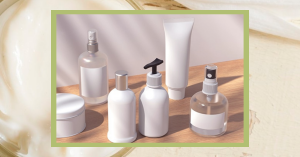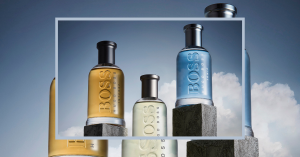Hair
Avoid Awkward Streaks! Here’s How To Blend Hair Extensions Like A Pro
a great method to add length and volume to your natural hair
By: Beauty Insider Journalist / April 1, 2022

We’ve all had our hair deciding on its own to have a moment at the worst times. We also know the conflict when we chop our locks but desire to have long curly hair once more. Well, it’s all achievable with an easy fix by using hair extensions that have been a saving grace for many. Therefore, if you’re new to hair extensions or unable to get the hang to blend them seamlessly, then Beauty Insider’s got you.
Extensions are a great method to add length and volume to your natural hair, but they do have some drawbacks. Knowing how to effortlessly merge hair extensions into your own strands is more difficult than it appears, aside from colour matching and selecting the proper length. Even A-list celebrities like Kim Kardashian and Ariana Grande have been known to make blending mistakes.
Contents
How To Blend Hair Extensions According To Your Hair Type And Length
Layered hair

Layered hair may be fantastic for framing your face and adding movement to your hair, but it can be difficult to combine. You have two options: either use your hair extensions as usual and cut the ends to fit your layers, or use your hair extensions to generate new layers. To do so, separate the top layer of your hairline and knot it out of the way before braiding the rest of your hair into a snake braid. Begin braiding at the top left side and work your way to the right in a tight three-strand braid.
Make a backwards and add hair from the following row in a left-to-right direction. Continue back and forth until you reach the nape of your neck, where you may knot and pin any stray strands back into place. You’ve effectively made shelves on which to clip your human hair extensions so that the ends don’t seem out of place. Untie the top layer and mix with a brush.
Straight hair

Because they come straightened, this is arguably the simplest hair type to combine hair extensions with. That doesn’t mean you won’t have to put in some effort to make them seem perfectly blended. Straight hair’s biggest challenge is usually the roots, but the good news is that it’s very controllable. Before you even put your hair extensions in, you’ll need to perform a lot of prep work.
Divide your hair into rows from the nape of your neck to right in front of your ears to blend in straight hair extensions. Working from back to front, firmly tease your roots to give them more body; this will also help you disguise your human hair extensions. Smooth over the top and brush your hair and the extensions together to blend once you’ve clipped in your clip in hair extensions.
Afterwards, lower the front part and the top layer of hair. Brush and straighten your hair to ensure that it fits in flawlessly with your extensions. Remember that your original hair is nurtured by your scalp’s natural oils, but human hair extensions aren’t, so use a protective spray before straightening.
Short hair

Making your short parts appear like layers is the easiest and best approach to integrating your human hair extensions with short hair. To obtain the most grip from your clip-ins, your hair should be roughly four inches in length. This allows you to experiment with your hair extensions and have some hair on the top layer to hide the clips for a more natural appearance. Remove the clips and put them flat on your head, leaving approximately an inch between the clips and your head so you don’t get a headache.
The advantage of connecting the bottom section first is that if you make a mistake, the layers above will hide it. Add extra rows of clip-ins and divide your hair equally. The most important thing to remember is to leave a layer of hair on top and sides to integrate the extensions and conceal the clips.
Thick hair

Even if you have short hair, the thickness of your hair must be correctly matched, since this will decide whether you have single, double, or even quad wefts. The quality and length of your hair are the next factors to consider. If your hair is in poor condition, you should endeavour to enhance its health.
The better the outcome looks with short hair, the stronger and healthier it is. When choosing certain hairstyles for short hair, it’s also important to consider your facial shape and hair type.
Curly hair

We all want curly tresses, but one of the major drawbacks is the dryness and frizz, as well as the fear of blending in hair extensions. The majority of you with naturally wavy or curly manes have more body at the roots, which helps us cover the tops of your hair extensions. To combat frizz, try to avoid using heat as much as possible. Before separating a one-to-two-inch length of hair, spritz your hair and human hair extensions with water.
Make a three-strand braid with your hair. You may make them as tight or as loose as you like, depending on the tightness of your natural curls, and you may want to change up the sizes because curls in the hair are never the same width naturally. Allow a couple of hours for your hair and hair extensions to dry before untying your braids and unravelling them gently with your fingers from the ends. Spray your hair extensions to keep the waves in place.
Thin hair

If your hair is fine, blending hair with tape in extensions is probably the best option because the tape is nearly undetectable, thin, and non-damaging, allowing your natural hair to grow in a healthy manner while wearing the extensions. However, heavier extensions are rare to be found in tape-ins, so if you have thicker hair and want a natural blend, we recommend clip-in or micro blend hair extensions.
They are great if your hair is really short and thin. This is great for your hair since the clips may show through thin hair. If you want to add length to your short but thick hair, you’ll need a thicker, heavier set.

















